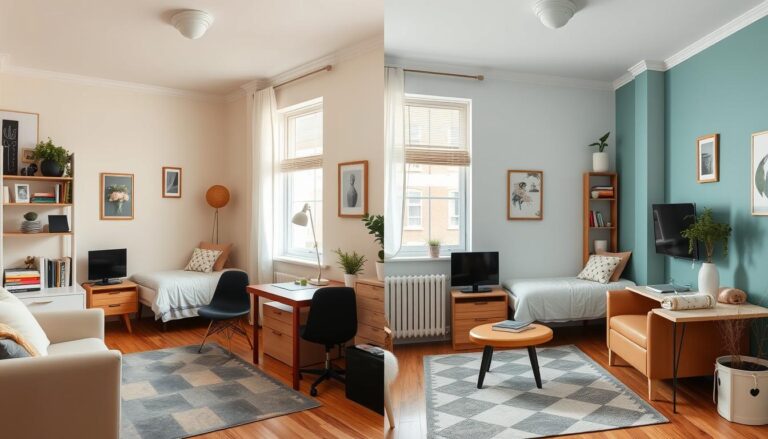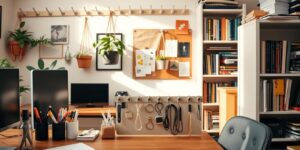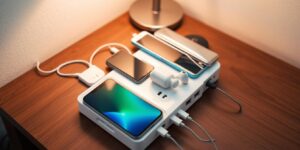How to Create a Study Nook in a Small Apartment
Finding a dedicated space to study or work in a small apartment can feel impossible. Yet, having a designated area for focused work is crucial for productivity and maintaining a healthy work-life balance. Whether you’re a student tackling assignments or a remote worker handling daily tasks, creating an apartment study nook can transform your productivity without requiring an entire room.
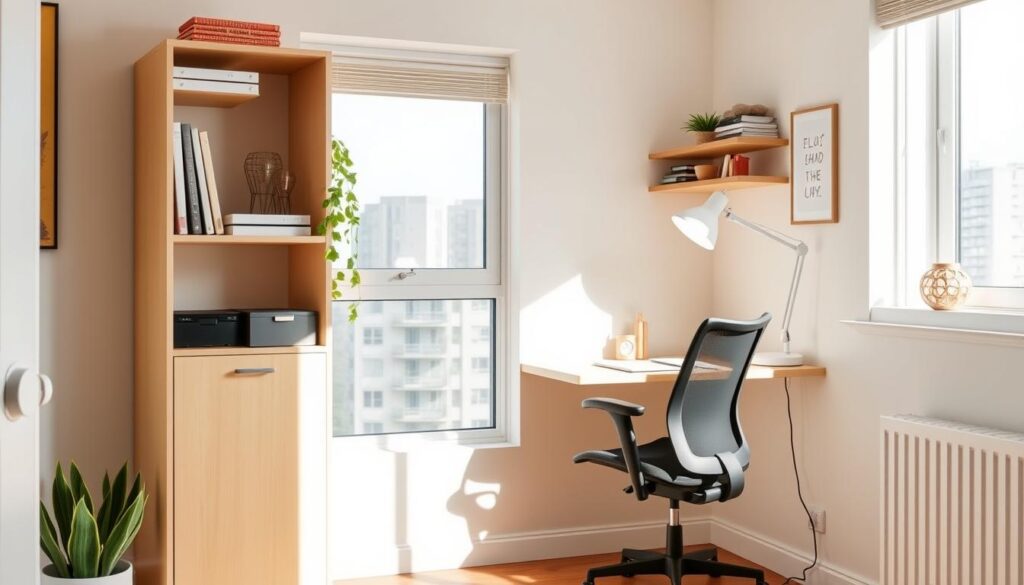
In this guide, we’ll explore practical, budget-friendly solutions to carve out a functional study space in even the smallest apartments. From clever lighting tricks to space-saving furniture and organization hacks, you’ll discover how to create a study corner that maximizes focus while minimizing spatial footprint.
Lighting Solutions for Your Apartment Study Nook
Proper lighting is essential for reducing eye strain and maintaining focus during long study sessions. In small apartments, strategic lighting can also make your study nook feel more spacious and inviting.
Maximizing Natural Light
Position your study area near a window whenever possible. Natural light not only saves on electricity but also boosts mood and productivity. If privacy is a concern, consider light-filtering curtains that allow sunlight while reducing glare on screens.
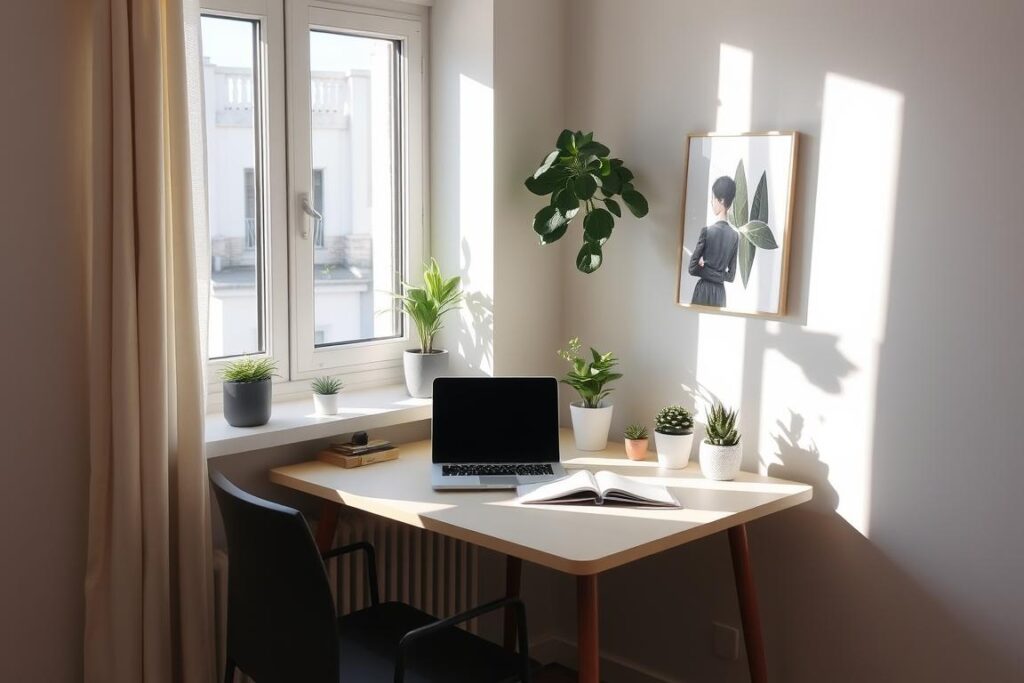
Affordable LED Lighting Options
When natural light isn’t sufficient, supplement with affordable LED lighting. Clip-on desk lamps save precious surface space and can be directed exactly where needed. Look for adjustable options with multiple brightness settings to adapt to different times of day.
Warm vs. Cool Lighting for Focus
The color temperature of your lighting affects concentration. Cool white light (5000K+) mimics daylight and helps maintain alertness during study sessions. Warm light (2700-3000K) creates a cozy atmosphere but may induce relaxation rather than focus. Consider adjustable temperature lamps that offer both options.
What Else Would You Like to Know?
Choose below:
Space-Saving Seating Solutions
Comfortable seating is crucial for productive study sessions, but traditional office chairs can overwhelm small spaces. Here are smart alternatives that prioritize both comfort and space efficiency.
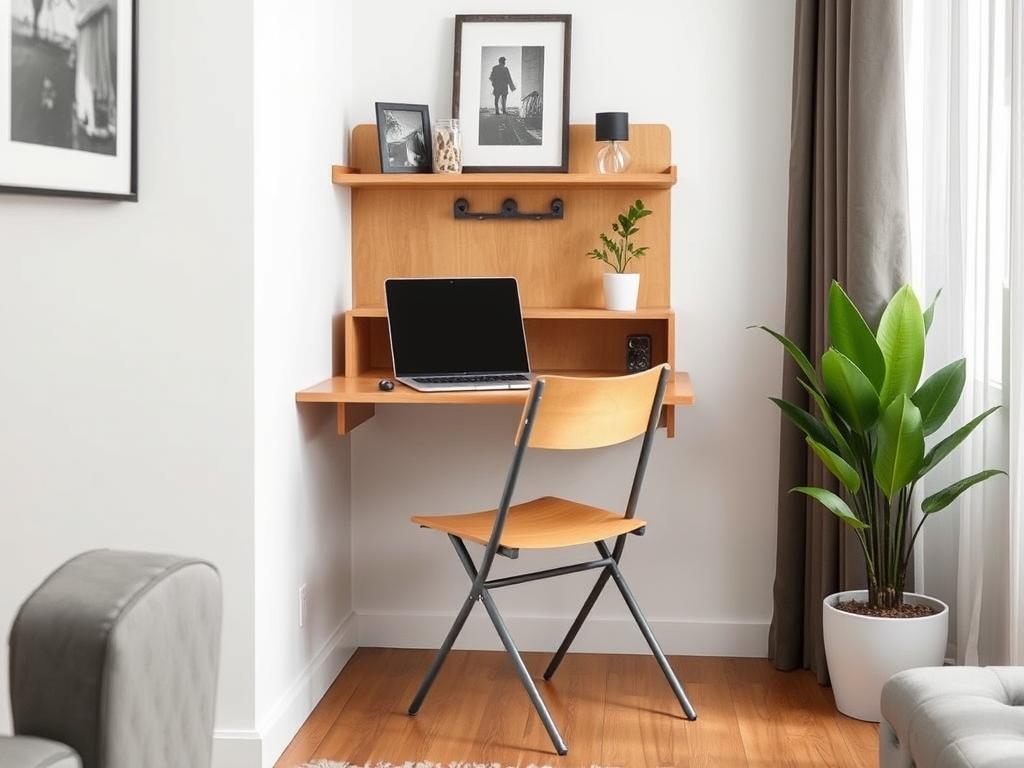
Foldable and Convertible Chairs
Foldable chairs offer the perfect balance between comfort and convenience. When not in use, they can be collapsed and stored in a closet or behind a door. Look for options with adequate padding and lumbar support to maintain comfort during longer study sessions.
Best Foldable Chair Options:
When to Choose Each Type:
Wall-Mounted and Floating Desks
Wall-mounted desks eliminate the need for floor space and can be paired with various seating options. Many designs fold up when not in use, making them ideal for multi-purpose rooms. Install at the proper height (28-30 inches from the floor) to ensure ergonomic comfort.
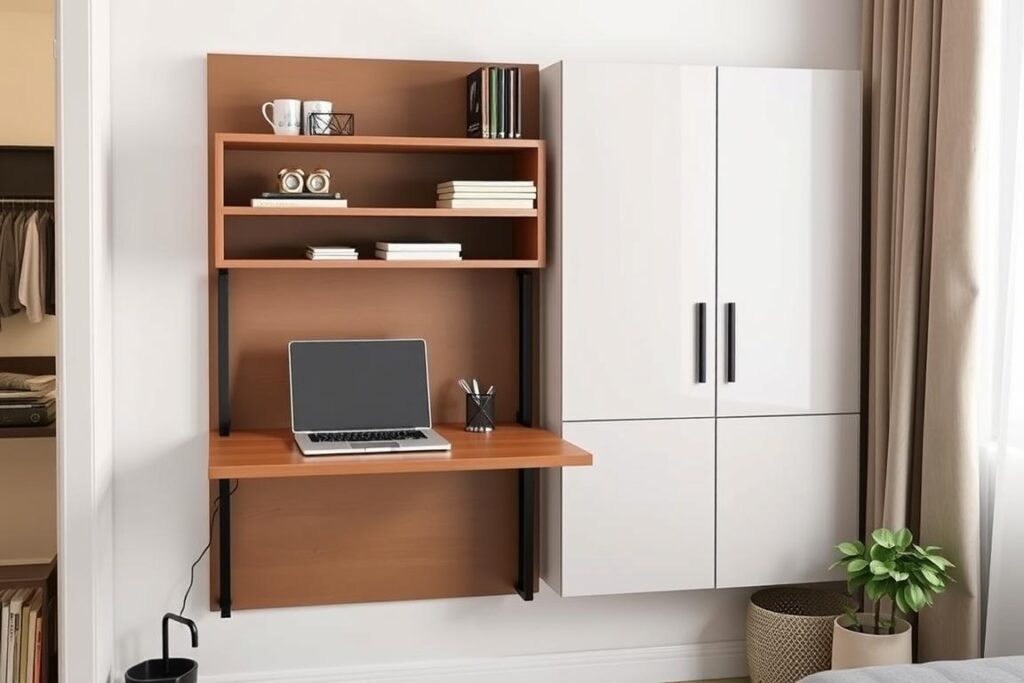
Ergonomic Floor Seating
For the ultimate space-saving solution, consider ergonomic floor cushions paired with a low coffee table or lap desk. This setup can be easily stored when not in use and works well for apartments with limited floor space. Look for cushions with back support and consider a floor mat for additional comfort.
“I transformed my tiny studio apartment corner into a productive study space with just a wall-mounted desk and a quality floor cushion. When I’m done studying, everything tucks away, and I have my living space back.”
Noise Control for Better Concentration
One of the biggest challenges of studying in a small apartment is managing noise distractions, whether from roommates, neighbors, or street sounds. Creating a quieter environment doesn’t require expensive renovations.
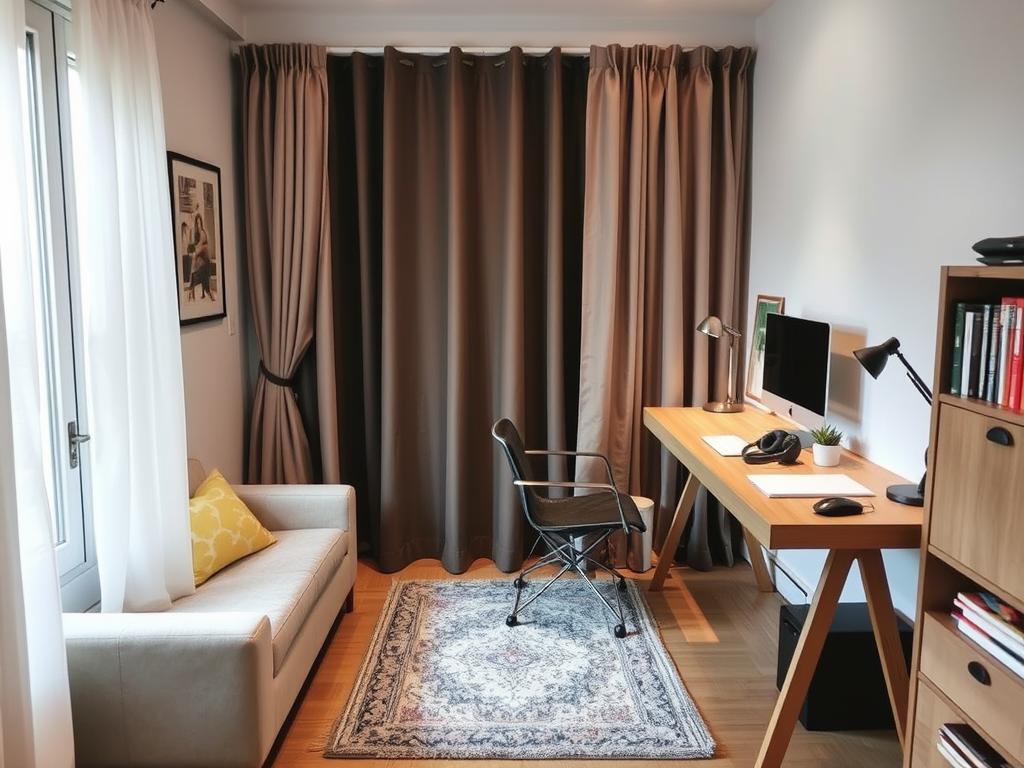
DIY Soundproofing Solutions
Simple household items can significantly reduce noise transmission in your study area. Strategic placement of soft materials helps absorb sound waves before they become distracting.
Budget-Friendly Noise-Canceling Headphones
When environmental noise can’t be controlled, a good pair of headphones becomes essential. You don’t need to spend hundreds of dollars to get effective noise reduction.
Under-$50 Noise Management Essentials:
- Over-ear headphones with passive noise isolation ($30-50)
- Earplugs with high Noise Reduction Rating (NRR) ($3-15)
- White noise machine with multiple sound options ($20-40)
- Door draft stopper to block sound from hallways ($10-20)
- Foam furniture pads to reduce chair/desk noise ($5-10)
White Noise Apps and Background Sounds
Free or low-cost white noise apps can mask distracting sounds and create a consistent audio environment that helps maintain focus. Experiment with different sound types to find what works best for your concentration style.
Best Sound Types for Studying:
Recommended Free Apps:
Organization Hacks for Small Study Spaces
In a compact apartment study nook, effective organization isn’t just about tidiness—it’s essential for functionality. Smart storage solutions help maximize your limited space while keeping study materials accessible.
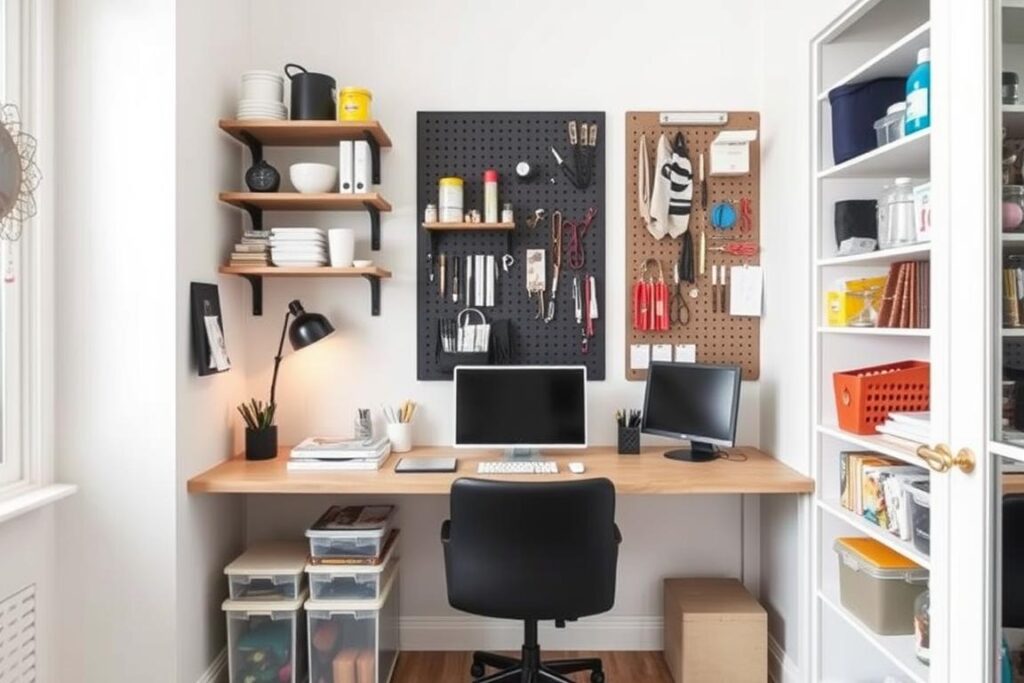
Vertical Storage Solutions
When floor space is limited, think upward. Vertical storage makes use of wall space that would otherwise go unused, keeping your study materials organized without encroaching on your work area.
Under-Desk Organization
The space beneath your desk offers valuable storage potential. Keeping this area organized helps maintain leg room while providing easy access to frequently used items.

Best Under-Desk Storage:
Cable Management Solutions:
Multi-Functional Furniture
In small apartments, every piece of furniture should serve multiple purposes. Look for study desk options that incorporate storage while maintaining a small footprint.
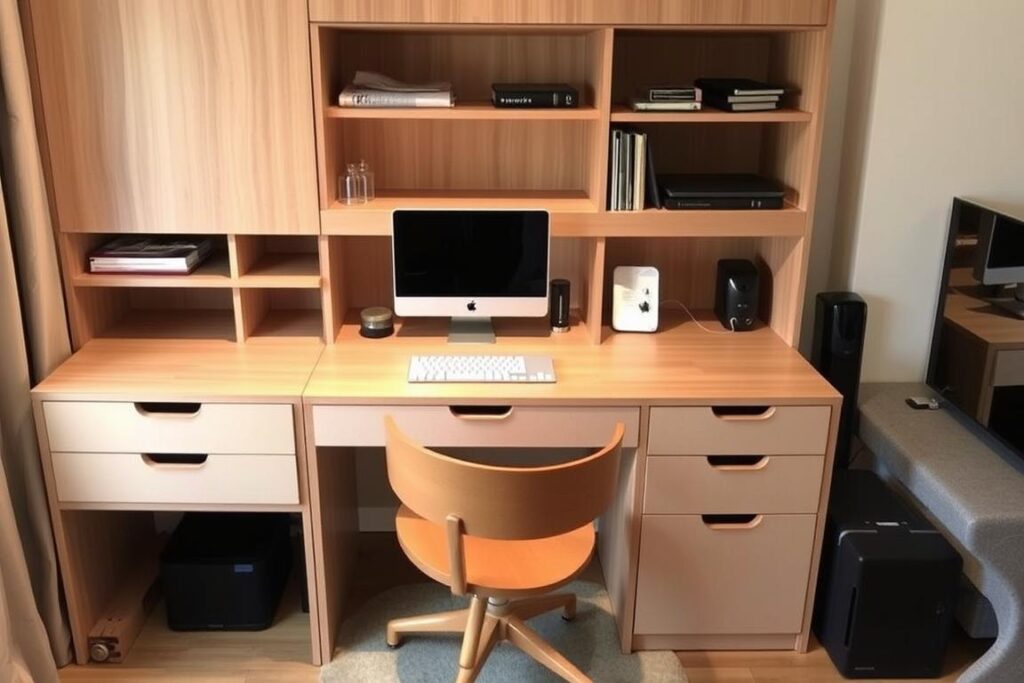
Quick Setup Tips for Your Apartment Study Nook:
- Position your desk perpendicular to windows to reduce glare
- Keep frequently used items within arm’s reach
- Use drawer dividers to maximize interior storage efficiency
- Label containers to maintain organization systems
- Create a “daily basket” for current projects to quickly set up and pack away
Quick Setup Tips for Your Apartment Study Nook
Creating a functional study space doesn’t have to be complicated or time-consuming. These practical tips will help you establish an effective study nook with minimal effort.
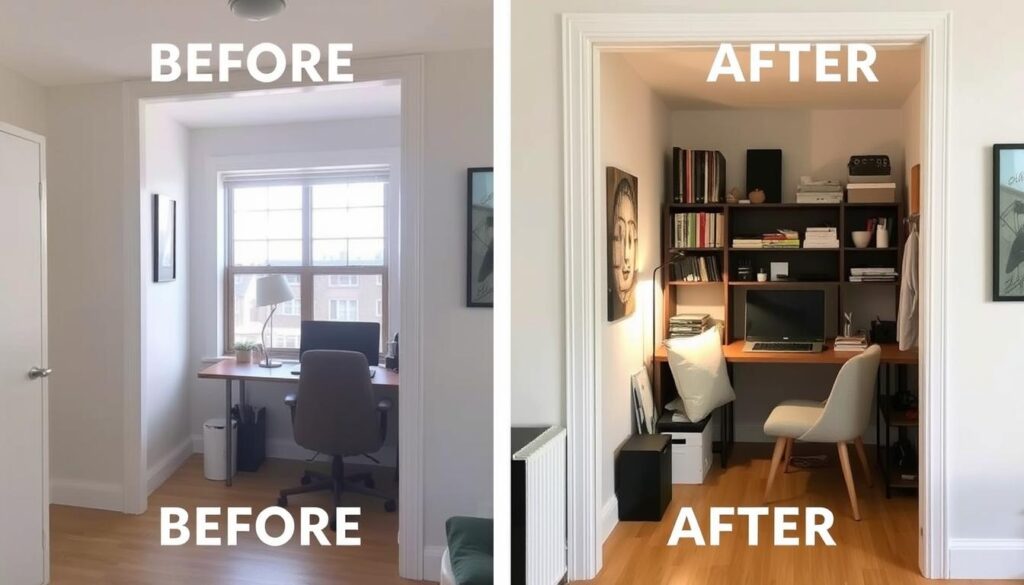
Location Selection Tips:
Setup Checklist:
Under-$50 Study Nook Essentials
Building a functional study space doesn’t require a large budget. These affordable essentials will help you create an effective workspace without breaking the bank.
Maintaining a Productive Study Environment
Creating your apartment study nook is just the beginning. Keeping it functional and clutter-free requires ongoing maintenance and smart habits.
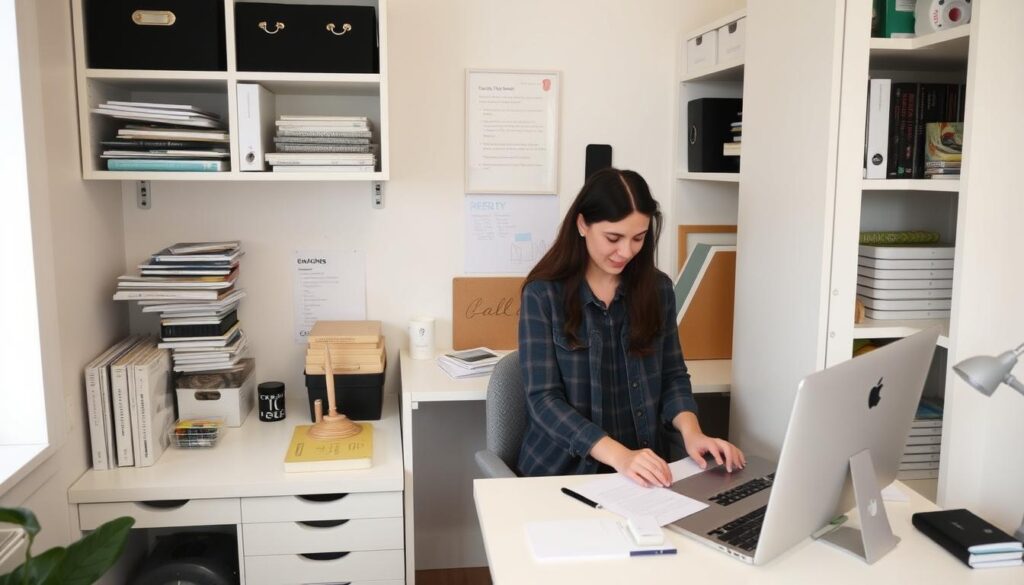
Daily Maintenance Routines
Establishing simple daily habits prevents clutter from accumulating and helps maintain your study nook’s functionality. These quick routines take just minutes but make a significant difference.
Digital Organization
Physical organization is only half the battle. Keeping your digital files organized helps maintain productivity and reduces the need for physical storage.
File Management Tips:
Digital Tools:
Creating Your Perfect Apartment Study Nook
Even in the smallest apartment, a dedicated study space is possible with creative thinking and smart organization. Your apartment study nook doesn’t need to be elaborate or expensive—it just needs to support your focus and productivity.
Remember that the perfect study space evolves over time. Start with the essentials, observe what works for your specific needs, and adjust accordingly. The most important element is consistency—having a designated space that signals to your brain it’s time to focus.
By implementing the lighting, seating, noise control, and organization strategies we’ve discussed, you can transform even the tiniest corner into a productive study haven. Your future self will thank you for the investment in your academic and professional success.
The Best Colors to Make Your Student Apartment Feel Bigger
» See exclusive tips for your home


